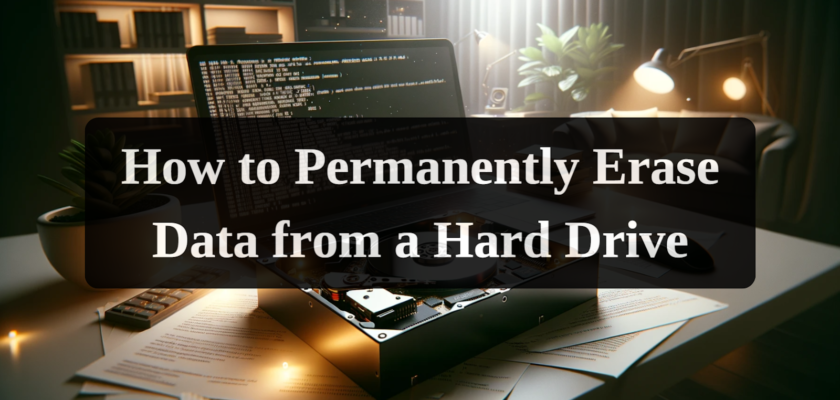From time to time, we need to erase data from a hard drive. This may be due to selling a computer, recycling an old drive, or simply needing to make room for new files. However, deleting files from the recycle bin or formatting the drive does not guarantee that the data will be completely destroyed. Even after deletion, files can be recovered with specialized software.
Why files don’t disappear after deletion
When you delete a file from a hard drive, the operating system does not physically erase it from the drive. Instead, it simply removes the file entry from the file system. The file system is a kind of map that helps the operating system track where files are located on the drive. When the file entry is removed from the file system, the operating system can no longer find the file. However, the file itself still remains on the drive until it is overwritten by other data.
Deleted files can be recovered with specialized data recovery software. Data recovery software works by scanning the drive for fragments of data that have not been overwritten. If the program finds fragments of data that match the deleted file, it can restore the file.
How to erase data permanently
To completely delete a file from a hard drive, it must be overwritten with random data. This can be done with specialized data-wiping software. Data wiping software overwrites the entire drive with random data, making it impossible to recover deleted files.
There are several methods for wiping a hard drive:
- Single wipe: The drive is overwritten once with random data. This method does not guarantee complete data destruction, but it is sufficient for most users.
- Multiple wipes: The drive is overwritten with random data several times. The more passes, the higher the chance of complete data destruction.
- Gutmann wipe: The drive is overwritten with random data according to a special algorithm. This method is one of the most reliable ways to erase data.
What programs to use for wiping a hard drive
The following programs can be used to wipe a hard drive:
- DBAN: A free program that allows you to erase data using multiple methods, including multiple wipes and Gutmann wipes.
- Eraser: A paid program that offers a wide range of data deletion features.
- CCleaner: A free program that is designed to clean up a computer from junk. Includes a hard drive wiping feature.
- Secure Erase: A built-in feature in some hard drives that allows you to erase data using a special algorithm.
Additional data protection methods
In addition to using data-wiping programs, there are several other ways to protect data from unauthorized access:
- Physical destruction: The most reliable way to erase data is to physically destroy the hard drive.
- Encryption: Encrypting data makes it inaccessible to unauthorized users without a special key. This does not guarantee complete data destruction, but it makes it much more difficult to recover.
- Two-factor authentication: Two-factor authentication requires entering an additional code sent to your phone in addition to your usual password. This helps protect your data even if someone knows your password.
Recommendations for choosing a program
For most users, a free program such as DBAN or Eraser will be sufficient. These programs offer reliable wiping methods and are easy to use.
For more demanding users, paid programs such as ShredDisk or Disk Wiper can be considered. These programs offer an expanded set of features, such as the ability to schedule wipes or encrypt data.

